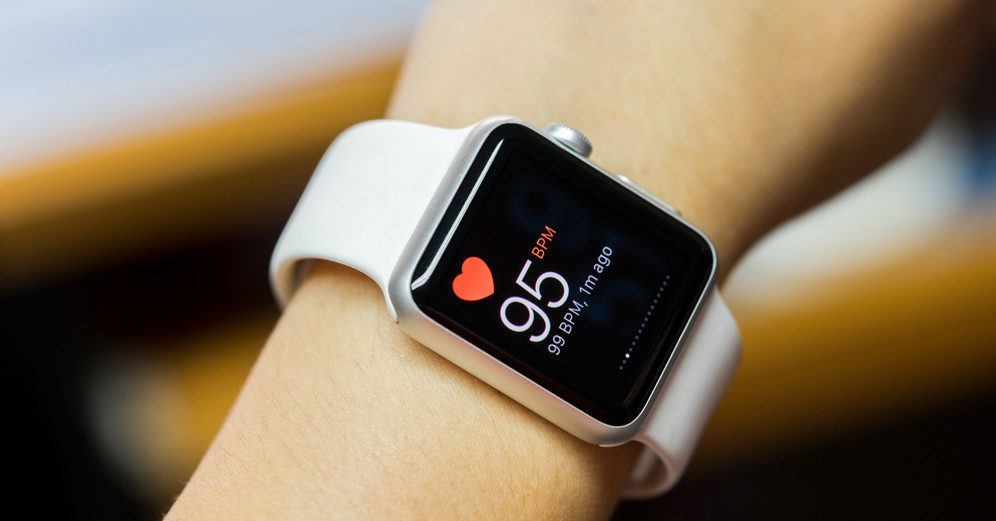Global spend on wearable devices is forecast to pass USD $81.5 billion in 2021, almost 20% higher than last year.
As more people use wearable devices, the opportunity to use wearables in healthcare increases. Wearable fitness trackers and smartwatches help doctors monitor the vitals of patients with chronic conditions. These devices can track vitals such as heart rate and blood pressure to help doctors recognise early symptoms of chronic diseases.
Wearable devices can improve care delivery, provide earlier diagnoses, and enhance medical data. Healthcare practitioners and patients alike are beginning to see how wearable technologies can be valuable tools for medical treatment, diagnosis and monitoring.
Wearable devices in healthcare provide doctors with current patient data
As wearable technology advances and becomes more affordable, consumers now purchase wearable devices at higher rates than ever before. Wearable devices in healthcare, such as smartwatches and fitness trackers, can provide healthcare practitioners with the information they need to deliver a higher quality of care.
Wearable devices can track patient vital signs to provide doctors with updates on how a patient’s health might be suffering or improving. Current data can help practitioners in the following ways:
- Patient rehabilitation: Healthcare practitioners can monitor patients while they rehabilitate outside of the hospital. Wearable devices can provide accurate readings of vitals so that doctors can deliver better care.
- Monitoring mental health: This is a relatively new area for wearable devices. Wearables can track vitals such as heart rate, blood pressure, and body temperature, providing insight into a patient’s mental well-being.
- Updating Electronic Health Records (EHRs): Data collected from a patient’s wearable device can be integrated with their EHR, so doctors have up-to-date information during their next consultation.
Wearable devices in healthcare provide doctors with current patient data, enabling them to make decisions and monitor their patients more efficiently than relying on only the patient’s word or memory. With current information, doctors can also diagnose patients and potentially catch medical conditions early.

Wearable devices in healthcare can help with diagnosing patients
Current patient data can support healthcare practitioners in recognising healthcare conditions early and diagnosing patients. Essentially, doctors can leverage the information collected by wearables to draw conclusions about a patient’s condition.
Some metrics that wearables can measure to inform diagnosis include:
- Heart arrhythmias and heart rate
- Sleep patterns
- Body temperature
- Respiratory function
- Blood pressure
Wearable devices in healthcare track a patient’s vitals whether they are well or not, so they can be used to create a benchmark to help doctors detect early symptoms of diseases or conditions. If a wearable device notices these anomalies, it can inform the patient and encourage them to engage with a healthcare practitioner. The doctor could then access the information tracked by the device and leverage the report to inform the patient’s diagnosis. Early diagnosis means that doctors can create treatment plans sooner. Early detection and treatment are essential when chronic diseases affect 47% of the Australian population.
Wearable devices, alongside interoperability, can help both practitioners and patients by providing a healthcare integration platform for patient data sharing among medical professionals. Such connections between institutions can help doctors collaborate on diagnoses where needed.

Data from wearable devices can improve collaboration between institutions
Patients often need to visit multiple healthcare professionals and providers to get a diagnosis or receive treatment.
Wearable devices can achieve interoperability with EHRs to facilitate collaboration between health practitioners when diagnosing or working with patients. Traditionally, doctors would collaborate based on data collected from one patient visit. They might share scans or vitals collected at one moment in time. Wearable devices in healthcare, when integrated with EHRs, can present different doctors with the same real-time information to help them diagnose patients and develop treatments.
When data from a wearable device integrates with EHRs and other documentation, it allows for easy data transfer between institutions. Healthcare professionals can then access up-to-date data that is relevant to their work with the patient. Data integration can lead to better utilisation of resources and improved delivery of care.
Wearable devices in healthcare can feed some of the data for documentation between institutions, such as
- Comprehensive Primary Care: These documents support collaboration between a patient’s primary care and preventative services. This system can alert primary carers if a patient is in the emergency department and inform them of the next steps in care.
- Admission, Discharge, and Transfer System: These track patients when moving between care or returning to primary care providers, as well as the care they receive.
- Continuity of Care Documents (CCDs): The standard for sharing clinical information between healthcare professionals and institutions.

Wearable devices in healthcare can provide public health data
The goal of public health is to protect the public and improve healthcare for the population. Wearable technology in public health data allows for more accurate estimates of population health. As we leverage wearable devices more in population-based research projects, this will become an increasingly important benefit to consider.
When interoperability and wearable devices in healthcare come together, they can facilitate public health data collection. If users permit their vitals to be shared directly with their EHR, public health agencies can leverage it to understand health trends and highlight at-risk populations.
Wearable devices in healthcare can provide healthcare practitioners with real-time data that can address public health crises. Most recently, we have seen the benefits of fast and effective monitoring throughout the COVID-19 crisis. Wearable devices can monitor vitals that indicate COVID-19 symptoms and alert the user to forward these readings to their healthcare professional.
In addition to managing crises, wearable devices can provide high-quality and real-time data analytics to inform healthcare workers of potential public health crises. Similarly to diagnosing early, catching a public health crisis early has the potential to mitigate its threat.
Enabling interoperability for wearable devices in healthcare
Fluffy Spider Technologies creates interoperable systems for wearable technology that manage the ongoing data feed from the device’s local storage to a permanent location, such as the cloud. Data integration between wearable devices and medical records requires a dedicated team with experience in all aspects, from devices to cloud, with hands-on knowledge of the protocols, processes and privacy considerations. We can work with you through the entire process, from concept to commercialisation.
Visit the healthcare integration and our Integration Services page to learn more about our capabilities.

